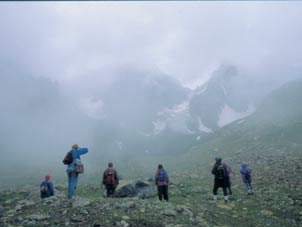Links
|
Because of its geographical location, the mainland, Anatolia, has witnessed the mass migration of diverse peoples shaping the course of history. Twenty fascinating civilizations render Turkey the heir of 10.000 years old history, which has still been examined for further ancient secrets to be brought up into daylight. These lands inhales at any moment the mystery of the past through the existence of the statues of gods and goddesses, temples, theaters, agoras, churches, mosques, medresseh, palaces and caravanserais. Becoming a united whole of daily life and all other values, Turkey forms ideal circumstances. A country of sun and history, Turkey is located where the three continents making up the old world, Asia, Africa and Europe are closest to each other and straddle the point where Europe and Asia meet. Because of its geographical location, the mainland, Anatolia, has witnessed the mass migration of diverse peoples shaping the course of history. The home to countless civilisations, Anatolia has developed a unique synthesis of cultures, each with its own distinct identity, yet each linked to its predecessors through insoluble treads. We organized our site so that you can discover each of seven different geographical regions individually or you can check out the activities you might be interested during your visit to Turkey. Turkey has mainly following 7 regions to visit ; Marmara, Aegean, Mediterranean, Central Anatolia, Black Sea, Eastern Anatolia, Southeastern Anatolia
|
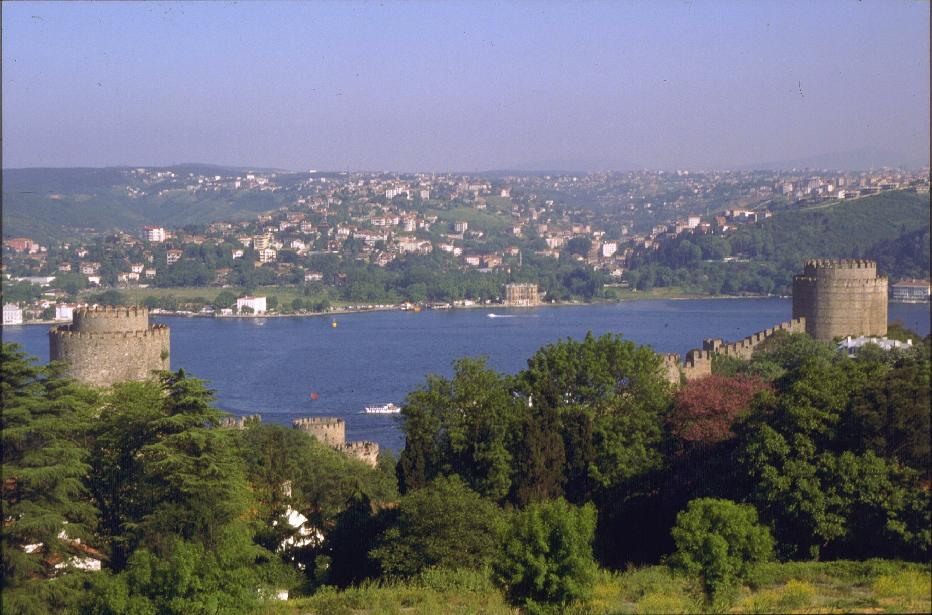 |
| Marmara: İstanbul embraces two continents, one arm reaching out to Asia, the other to Europe. Through the city's heart, the Bosphorus strait, courses the waters of the Black Sea, the Sea of Marmara and the Golden Horn. The former capital of three successive empires - Roman, Byzantine and Ottoman - today İstanbul honors and preserves the legacy of its past while looking forward to its modern future. Indeed, it is İstanbul's variety that fascinates its visitors. The museums, churches, palaces, great mosques, bazaars and sights of natural beauty seem inexhaustible. As you recline on the shores of the Bosphorus at sunset, contemplating the red twilight reflected in the windows on the opposite shore, you understand, suddenly and profoundly, why so many centuries ago settlers chose to build on this remarkable site. At times such as these, you feel that İstanbul is truly one of the most glorious cities in the world.
|
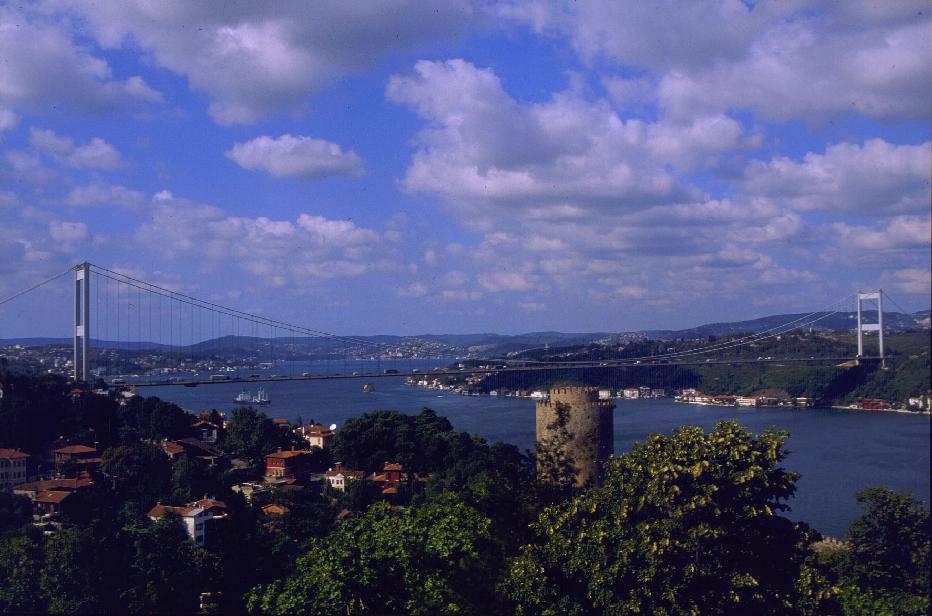 |
|
Aegean: Turkey's Aegean shores are among the loveliest landscapes in the country. The magnificent coastline, lapped by the clear waters of the Aegean Sea, abounds in vast and pristine beaches surrounded by olive groves, rocky crags and pine woods. Dotted with idyllic fishing harbours, popular holiday villages and the remains of ancient civilisations attesting to the inheritance of more than 5,000 years of history, culture and mythology, this region. offers a holiday with something for everyone - nature lovers, sun worshippers, photographers, sports-enthusiasts, sailors and archaeologists. Along the whole length of the coast, accommodations to suit every taste and price range can be found. Known in Turkish as "Beautiful Izmir", the city lies at the head of a long and narrow gulf furrowed by ships and yachts. The climate is mild and in the summer the constant and refreshing sea breezes temper the sun's heat. Behind the palm-lined promenades and avenues which follow the shoreline, the city, in horizontal terraces, gently ascends the slopes of the surrounding mountains. The third largest city in Turkey, Izmir's port is second only to Istanbul's. A cosmopolitan and lively city all year round, during the International Arts Festival (June/July) and the International Fair (August/Sept), Izmir bursts with an added vibrancy.
|
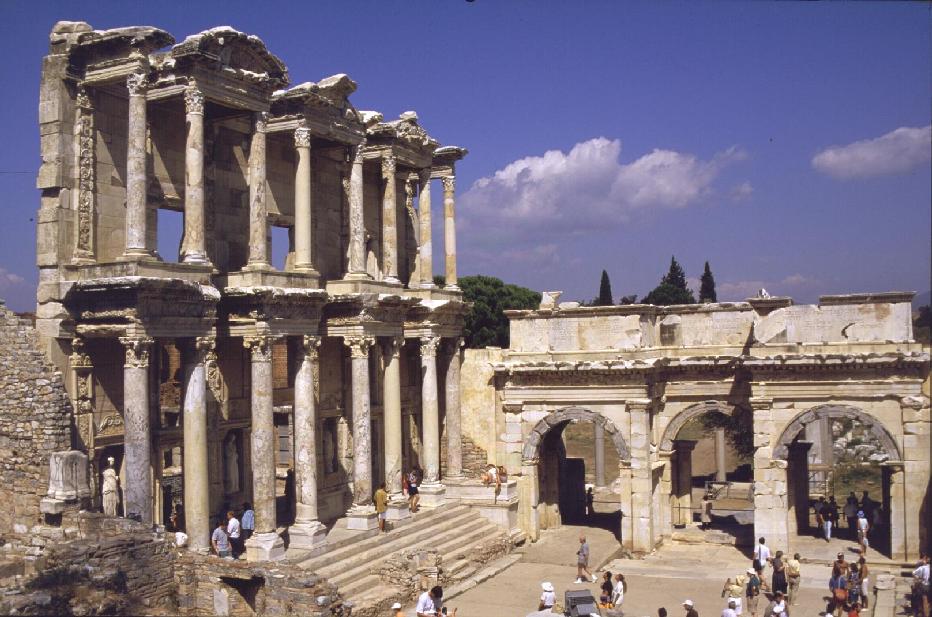 |
|
Mediterranean:
In Antalya, the pine-clad Toros (Taurus) Mountains sweep down to the sparkling clear sea forming an irregular coastline of rocky headlands and secluded coves. The region, bathed in sunshine for 300 days of the year, is a paradise of sunbathing, swimming, and sporting activities like windsurfing, water-skiing, sailing, mountain climbing and caving. If you come to Antalya in March and April, you can ski in the mornings and in the afternoons swim in the warm waters of the Mediterranean. Important historical sites and beautiful mosques await your discovery, amid a landscape of pine forests, olive and citrus groves and palm, avocado and banana plantations. The Turkish Riviera is Turkey's tourism capital. Its full range of accommodations, from tourist class to deluxe hotels, and the hospitable people of Antalya will make your holiday comfortable and enjoyable. Set amid amazing scenery of sharp contrasts, Antalya, Turkey's principal holiday resort, is an attractive city with shady palm-lined boulevards and a prize-winning marina. In the picturesque old quarter, Kaleiçi, narrow, winding streets and old wooden houses abut the ancient city walls. |
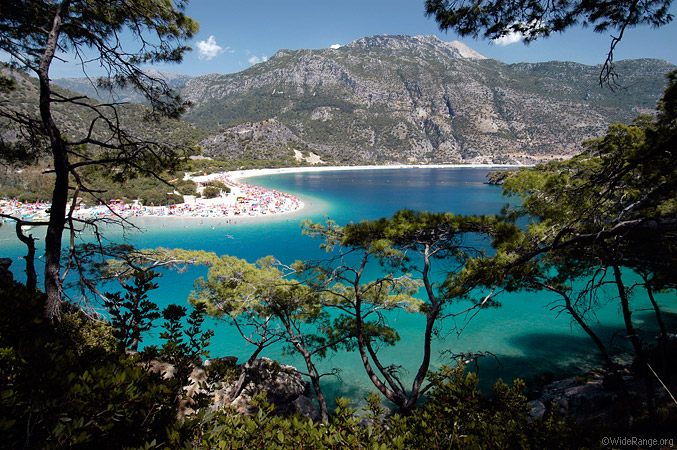 |
|
Central Anatolia: The central Anatolian plateau, ochre-hued, cleft by ravines and dominated by volcanic peaks, forms the heart[and of Turkey. Covered with wheat fields and outlined with ranks of poplars the boldly contoured steppe has a solitary majesty. This plateau was one of the cradles of human civilisation. At Çatalhöyük remains of settlements from as early as the eighth millennium B.C. have been unearthed. The homeland of many people and the historic battleground of East and West, here the Hattis, Hittites, Phrygians, Galatians, Romans, Byzantines, Seljuks and Ottomans all fought for their sovereignty and established their rule. In the 11th century the migrating Turks from the east made the plateau their own. During its turbulent history Central Anatolia has endured invasion by great conquerors such as Alexander the Great and Tamerlane. In the course of ten millennia of habitation the denizens of the area have reflected in their art - from the vigorous paintings of Çatalhöyük to the confident lines of Seljuk architecture, to, more recently, the impressive modern form of Atatürk's mausoleum - the dramatic contours of the surrounding landscape. The seat of Turkey's government in the strategic heart of central Anatolia, Ankara is the city selected by Mustafa Kemal Atatürk, the republic's founder, to house the capital of the newly politically defined country. Though thoroughly modern in appearance Ankara's history and that of the surrounding area dates back to the Bronze Age and the Hatti civilisation. In the second millennium B.C. the Hittites followed as lords of the land and were succeeded in turn by the Phrygians, Lydians and Persians. In the third century B.C., the Galatians, a Celtic race, made Ankara their capital. It was then known as Ancyra, meaning anchor. The Romans and then the Byzantines held this strategic expanse of land until 1073 when the Seljuk Turks commanded by Alpaslan conquered it. Just over three centuries later in 1402, the city, then but a small outpost, passed into the hands of the Ottomans led by Beyazit . |
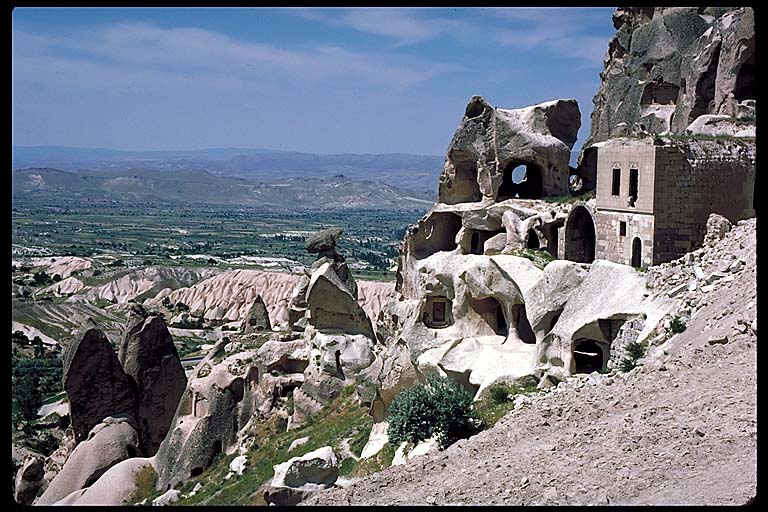 |
|
Black Sea: The vibrant green of Turkey's lush, humid Black Sea Coast surprises those who imagine the country to be nothing but barren steppe. From the European border with Bulgaria to the Georgian border, dense pine forests cover the mountaintops while lush vegetation and bountiful crops grow in the lower elevations and valleys. Along the coastline, mile after mile of beautiful uncrowded beaches offer sun, swimming and relaxation. In the springtime, delicate wild-flower blossoms carpet the rolling meadows of the eastern hills. The wooden houses in fishing villages and mountain hamlets alike preserve indigenous and traditional architectural styles. The humid climate and fertile soil encourage cultivation of a variety of crops including tea, tobacco, corn and hazelnuts. The magic of such a diverse landscape proves irresistible to any friend of nature, whether hiker or mountain climber or canoe enthusiast; whether you go in by mountain bike or by jeep safari. Archaeological excavations from the early Bronze Age settlements at Ikiztepe in Samsun Province have uncovered evidence of the region's earliest inhabitants. The Hittites, Miletians, Phrygians and, according to Homer, the Amazons all colonised parts of the coast. Alexander the Great in his world conquest also brought the region under his sovereignty. Eventually, it was incorporated into the Roman and then the Byzantine Empire. The 15th century saw the greater part of the area come under the Ottoman rue of Sultan Mehmet II. The Black Sea is easily accessible to tourists and provides a wide range of hotels and restaurants at a variety of prices. |
|
|
Eastern Anatolia: The Toros (Taurus) Mountains paralleling Turkey's southern border, and the Black Sea Mountains in the north meet to form a mighty range which defines the country's eastern border. The tremendous diversity of the eastern and southeastern lands surprises travellers: the red ochre plateau of Erzurum; the forests, waterfalls, and green pastures of Kars and Agri; the permanent snow-cap on biblical Mount Agri (Ararat); and the immense Lake Van with its deep blue waters. Dwellings and ways of life also vary greatly in this large region. For example, small, earth-roofed houses, built close to the ground typify Kars. Despite a generally austere life, the people of Kars are generous and hospitable. The region's long and turbulent history has left monuments to its various civilisations: Byzantine monasteries and churches, Seljuk mausoleums and caravanserais and elegant Ottoman mosques and hilltop citadels. To the inveterate traveller and lover of adventure, this region of Turkey fascinates, astonishes and informs.
|
|
|
Southeastern Anatolia: The Southeastern Anatolian Region has a very rich history and cultural heritage, as can be seen in its magnificent historical sites. Its history begins around 7,000 B.C. in the New Stone Age. Between 2,000 B.C. and 1,500 B.C. came the Hurris who were followed by the Hittites sometime around 1,200 B.C. In the land which encircles the Firat (Euphrates) and the Dicle (Tigris) rivers, lived Abraham, the patriarch claimed by three world religions. Some think that Abraham was born in what is now called Sanliurfa, supposed to have been Ur of the Chaldees, and later moved south from the city to Harran. In Harran, which was an important Mesopotamian historic and cultural center, the ruins of one of the largest and oldest Islamic universities can be seen among the archaeological remains. Restoration of the 18th-century mansion, Küçük Haci Mustafa Hacikamiloglu Konagi in Sanliurfa, is now complete. It has just reopened and now serves as an art gallery. When you travel from the south to the north over the Mesopotamian plains, the first high mountain to be seen is the picturesque Mt. Nemrut, with the mausoleum of the Commagene King Antiochos at its 2,150 meter peak. The most important areas of the region are Diyarbakir, whose city walls are a superb example of medieval military architecture; Mardin with its regional architecture; and Gaziantep, a large trade and industrial center which contains the remains of late Hittite cities. The Atatürk Dam Lake is the region's holiday and water-sports center. There are many beaches along the shore of the lake which can give you an unforgettable holiday experience under the Mesopotamian sun.
|
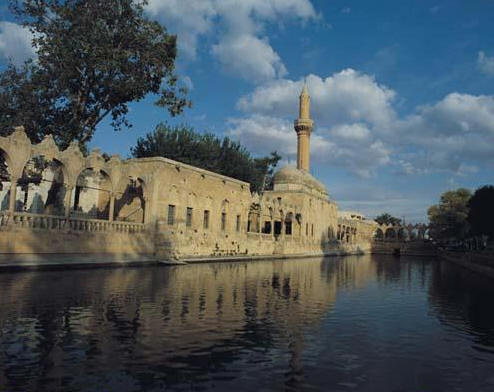 |

